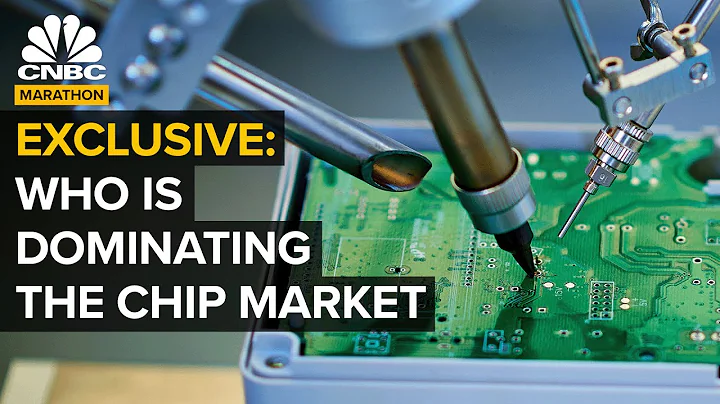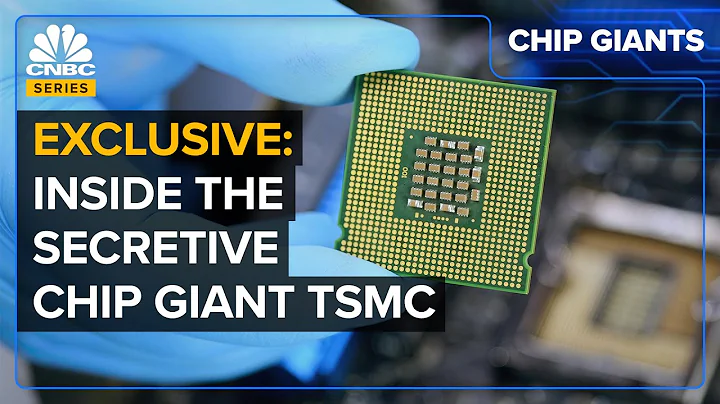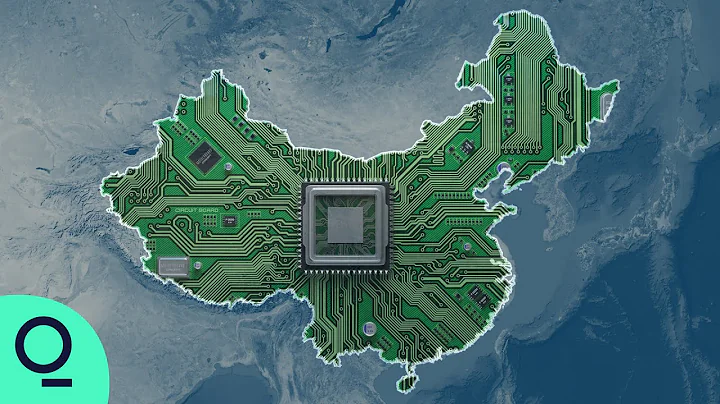Financial News Agency (Shanghai Editor Liu Rui) News, As the US stock market financial reporting season has slowly kicked off recently, major semiconductor industry giants around the world have also begun to release financial reports one after another.
Previously, foundry giant TSMC and semiconductor equipment manufacturer ASML have both delivered outstanding results, making a good start for this semiconductor industry quarter. Next, domestic and foreign institutions expect that most semiconductor companies around the world will also release strong financial reports.
Semiconductor industry stocks have been rising for much of 2021, with the iShare Semiconductor ETF up nearly 40% in 2021. In early 2022, where will the semiconductor industry go? We may be able to get a glimpse of the financial report expectations of the semiconductor industry from domestic and foreign institutions. (The financial report release schedule of global semiconductor star companies is attached at the end of the article)
Point 1: The expectation of shortage of computing chips has weakened. How is the financial report performance of the three giants?
In the CPU/GPU field, the financial reports of the three giants of Intel , Nvidia and AMD are undoubtedly the focus of attention. Driven by the metaverse concept and third-quarter results in November last year, the stock prices of the three giants rose at the end of last year, but the stock prices all experienced a correction in January this year. Wall Street analysts said this may be due to factors such as the expected shortage of graphics cards and beginning to weaken.
html In January, Nvidia, AMD and Intel all said that a variety of low-priced graphics cards would be launched. At the same time, Nvidia also pointed out that shortages would be alleviated in the second half of fiscal year 2022. In addition, benefiting from the continued demand for cloud services in 2022, coupled with the undigested order deferral last year and the mass production of the new generation CPU , data centers are expected to take the lead in recovering from major North American manufacturers.According to Digitime, global server shipments will maintain a growth rate of 6.8% in 2022, and the procurement volume of major domestic and foreign brand server manufacturers will show double-digit growth.
Among the three, the domestic and foreign investment circles are the least optimistic about Intel’s financial report . In October last year, Ingle had already released a Q3 report card with revenue that was lower than expected. Huatai Securities predicted that Intel's Q4 revenue would fall by 8% year-on-year, and Tianfeng Securities predicted that Intel's Q4 revenue would fall by 8.3% year-on-year. JP Morgan's expectations are even more pessimistic, with Intel's Q4 revenue expected to drop 21% year-on-year.
Barclays also updated its rating on Intel last week, maintaining an "underweight rating" despite raising its target price to $50 from $45. As of Wednesday's close, Intel was trading at $53.62, which means Barclays believes it still has room to fall. KeyBanc analyst John Vinh will also downgrade Intel from "overweight" to "hold and wait" because he believes there are limited short-term catalysts for the stock price to rise.
In contrast, analysts are more optimistic about NVIDIA . According to the average estimate of 43 Wall Street analysts, Nvidia's expected revenue for the 2022 fiscal year ending in January this year is US$26.68 billion, which means that revenue in the fourth fiscal quarter ending in January is expected to increase by 49% year-on-year; on this basis, as of Fiscal 2023 revenue in January 2023 is expected to increase to $35.1 billion, a year-over-year increase of 18.1%.
Huatai Securities predicts that Nvidia’s revenue in the fourth fiscal quarter will increase by 48% year-on-year, and its profit will increase by 58% year-on-year. Tianfeng Electronics also predicts that Nvidia’s revenue is expected to increase by 48% year-on-year, and its profit will increase by 41.9% year-on-year.
As for AMD, although Wall Street experts are unanimously optimistic about AMD's financial performance, they are not so optimistic about its stock price performance. According to SeedkingAlpha data, the average 12-month price target rating given by 23 Wall Street analysts in the past three months is "moderate buy". However, the average target price given is $143, compared with Wednesday's closing price The price is $128, not much different.
JPMorgan Chase estimates that AMD’s fourth-quarter revenue will be US$401 billion, a year-on-year increase of 23.6%; Tianfeng Electronics and Huatai Securities expect AMD’s fourth-quarter revenue to increase by 39% year-on-year.
However, Citigroup analyst Christopher Danely believes that although AMD is expected to perform better than expected in the fourth quarter as notebook shipments increase and enterprise demand increases, he is skeptical of AMD stock. He gave a target price of $125, which he said was mainly due to the current high valuation and the uncertainty of the macroeconomic environment after the epidemic. UBS analyst Timothy Arcuri only gave a "hold" recommendation and expected the stock to fall 20% from the current price because Intel's future product roadmap may shape AMD's prospects. challenge.
Point 2: The epidemic in Xi'an affects the price of memory chips and . The industry's gross profit may rise
Since December 23 last year, Xi'an has been closed due to the epidemic. Xi'an is an important supply base for global NAND and DRAM chips. Both Samsung and Micron have large factories here. The closure of the city may cause the factory to reduce production or temporarily suspend production, which will have a major impact on the supply of the global NAND market.
According to Wind data, under the influence of the epidemic in Xi'an, the spot prices of DRAM and MLC NAND chips continued to trend upward from late December to early January.

DRAM and MLC NAND chip spot prices
Samsung, the world's largest memory chip manufacturer, has previously released a financial report forecast. It is expected that comprehensive sales in the fourth quarter will be 76 trillion won (approximately 63.2 billion U.S. dollars, a year-on-year increase of 23.5%), and operating profit will be 13.8 trillion won (approximately US$11.4 billion, a year-on-year increase of 52.5%). Although it broke a record high, it still fell short of market expectations.
However, this may have little to do with the memory chip business. Market research company Counterpoint Research said that this may be more mainly affected by employee bonuses, mobile business marketing costs and increased panel costs. Samsung will release its Q4 financial report on January 28, and you can carefully explore its specific situation at that time.
Micron will announce its financial report for the second quarter of fiscal year 2022 (from December last year to February this year) on March 31. The company had previously expected revenue guidance for the fiscal quarter to be US$7.3-7.7 billion ( median fell 2.5% month-on-month or increased 23% year-on-year). Huatai Securities predicts that Micron's third-quarter revenue may increase by 20% year-on-year, and profits may surge by 96% year-on-year. Tianfeng Electronics predicts that Micron’s third-quarter revenue may increase by 21% year-on-year, and its profit may increase by 29.8% year-on-year.
As memory chip prices continue to rise, many foreign investment banks have recently raised Micron's ratings, and most of them mentioned that the gross profit of memory chips may rise .
Bank of America global analyst Vivek Arya upgraded Micron's stock rating from "neutral" to "buy" and raised the target price from $76 to $100. He believes that the recent "inventory digestion" problem in the PC market has been alleviated, and the downward pressure on DRAM chip prices has also been reduced. Additionally, Micron has a compelling role in data center growth, 5, , and other key trends, and given that the stock has lagged the broader chip industry in 2021, its stock price could catch up to its previous gap with peers. .
Summit Insights Group analyst Kinngai Chan raised Micron's rating to "buy" from "hold." He said near-term risks are now priced into the stock price, and with DRAM semiconductor manufacturing costs falling faster than prices in the second half of fiscal 2022, Micron's gross margins may begin to expand.
Susquehanna Financial Group analyst Mehdi Hosseini reiterated his positive rating and $125 price target on Micron stock. "We believe things are changing again." He believes that starting from the end of the summer, as supply growth continues to be constrained and demand growth continues to be strong, Micron's profit margins will improve and market concerns will decrease.
Point 3: The demand for semiconductor equipment is still strong. Parts are out of stock or will continue to affect delivery times.
According to the latest data from SEMI and SEAJ, in November 2021, North American semiconductor equipment shipments amounted to US$3.933 billion (+5.01% month-on-month). Hitting a record high; Japan’s semiconductor equipment shipments reached US$2.681 billion (+3.22% month-on-month).
As competition among various countries and regions in the semiconductor field becomes increasingly fierce, the demand for semiconductor equipment continues to be strong. Broken down by region, Taiwan, China, overtook Mainland China and South Korea in the third quarter with a purchase scale of semiconductor equipment of US$7.33 billion, leaping to first place, an increase of 45% from the previous quarter. Driven by relevant incentive policies in the United States dedicated to expanding local production capacity, in November Texas Instruments , Samsung and Intel all announced plans to build new factories in the United States.
According to SEMI estimates, the total sales of semiconductor manufacturing equipment by equipment manufacturers is expected to exceed the US$100 billion mark in 2021, reaching US$103 billion, a year-on-year increase of 44.7%, and will further climb to US$114 billion in 2022.
ASML, which just released its financial report, was also better than expected. Despite a fire at its Berlin factory this month, the company still expects sales to rise 20% year-on-year in 2022.
However, Huatai Securities pointed out that the current production and transportation difficulties caused by the epidemic have caused the global shortage of key equipment parts and components to remain severe. Equipment delivery times continue to lengthen, and the shortage of parts and components is still the most important factor limiting the production capacity of equipment manufacturers.
Point 4: The impact of Malaysian floods on packaging and testing production capacity
In December last year, Malaysia suffered from floods. Roads were blocked and ports were severely disrupted. The normal production and delivery of goods by semiconductor manufacturers were seriously affected.
Malaysia is an important production base for global semiconductor packaging and testing. Intel, Micron, Texas Instruments, NXP, STMicroelectronics , etc. all have production lines here. Statista data shows that local packaging and testing production capacity accounts for about 13% of global production capacity. Due to this Affected by the flood, the production and shipment of some semiconductor products were hampered, which may lead to extended delivery times and financial performance may be affected.
BE Semiconductor, a Dutch semiconductor packaging equipment supplier, had lowered its fourth-quarter revenue forecast last month as major local factories were shut down due to flooding. The company did not disclose which customers would be affected by the shutdown, but the company's annual report showed that Foxconn, STMicroelectronics, ASE and Micron are among its existing customer lists.
Point 5: The U.S. government’s semiconductor support plan
In June last year, the U.S. government established the “U.S. Innovation and Competition Act of 2021 (USICA)” to stimulate the development of semiconductors in the United States. Although the bill has not yet passed Congress, JPMorgan Chase believes that there is a high chance that the bill will be passed in 2022.
JPMorgan Chase believes that the U.S. federal government will provide $3 billion in funding for each specific domestic wafer project, with the total allocation likely to reach 52 billion yuan, of which 39 billion yuan will be used for domestic semiconductor manufacturing and $13 billion for domestic semiconductor manufacturing. Specific semiconductor research and development projects. Once passed in the near future, the bill will provide many semiconductor companies with more financial spending power and stimulate stock price increases.
JPMorgan Chase believes that US-based foundry/IDM companies will benefit the most, especially those with US defense-related qualifications, such as GF , Intel, Micron, Texas Instruments, Micron, ON Semiconductor etc.; while international companies are in the second echelon of beneficiaries, such as TSMC, Samsung, NXP, Infineon , etc.






















